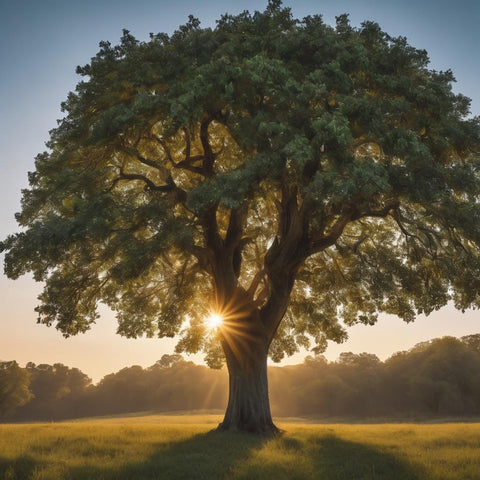Sycamore Tree:
Description:
- The term "sycamore" is commonly used to refer to two distinct species: the American sycamore (Platanus occidentalis) and the London plane tree (Platanus × acerifolia), a hybrid of American sycamore and Oriental plane.
- Sycamores are deciduous trees known for their distinctive mottled bark, large hand-shaped leaves, and spherical seed balls that hang from the branches.
Geographic Range:
- American Sycamore: Native to North America, American sycamores are found in a wide range of habitats, including riverbanks and floodplains.
- London Plane Tree: The London plane tree is often planted as an ornamental tree and is well-suited to urban environments. It has a broader global distribution.
Growing Conditions:
- Climate: Sycamores are adaptable to various climates. American sycamores thrive in eastern North America, while London plane trees are often cultivated in temperate regions worldwide.
- Soil: Sycamores prefer well-drained, moist soils. They can tolerate a range of soil types, including clay, loam, and sandy soils.
- Sunlight: Sycamores generally prefer full sun for optimal growth, though they can tolerate partial shade.
Caring for Sycamore Trees:
- Watering: Sycamores prefer moist soil conditions and benefit from regular watering, especially during dry periods. Adequate watering is crucial for young trees.
- Mulching: Apply a layer of organic mulch around the base of the tree to retain soil moisture, regulate temperature, and suppress weeds.
- Pruning: Prune sycamores to remove dead or diseased branches, shape the tree, and improve air circulation. Pruning is best done during the dormant season.
- Fertilization: While sycamores are generally adaptable to nutrient-poor soils, applying a balanced fertilizer in spring can promote healthy growth. The TreeHelp Sycamore Tree Fertilizer is a slow-release fertilizer designed specifically to address the nutrient needs of Sycamore trees in an urban landscaped environment.
Common Diseases and Pests:
- Anthracnose: Anthracnose is a fungal disease that can affect sycamores, causing leaf spot, defoliation, and twig dieback. Fungicide such as Fungi Max and proper sanitation practices can help manage anthracnose.
- Powdery Mildew: Powdery mildew is a fungal disease that can affect sycamores, leading to a white powdery substance on leaves. Spray with Liquid Copper fungicide to help manage powdery mildew.
- Sycamore Lace Bug: Lace bugs may infest sycamores, causing stippling and discoloration of leaves. Insecticidal soap or BugBuster II insect spray can be used for control.
Promoting the Overall Health of Your Tree
To bolster a tree's defense against diseases and insect invasions, it is important the prioritize its overall health to reduce susceptibility. Enhance your tree care routine by employing the TreeHelp Annual Care Kit for Sycamore Trees and adhering to a consistent, proper watering regimen.
Comprising three essential components, the TreeHelp Annual Care Kit focuses on ensuring the availability and effective uptake of proper nutrients. Inside, discover a custom formulated specialized fertilizer, mycorrhizal fungal treatment, and a green-up Biostimulant. The mycorrhizal treatment functions akin to bacteria in the human digestive system, breaking down nutrients and moisture into a form readily metabolized by the tree.
Recognize the significance of regular watering. Opt for less frequent, yet prolonged waterings when hydrating trees. The objective is to wet the entire root zone to a depth of 24 to 36 inches, not merely the surface. Unlike brief rains that only normally penetrate 5 to 6 inches of soil, leaving lower roots dry, a systematic watering program proves instrumental in sustaining urban trees. Embrace this comprehensive approach to fortify the vitality and overall health of your Sycamore tree.

